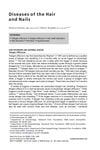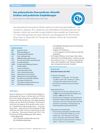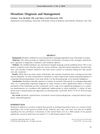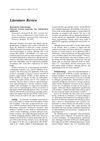Search
forLearn
5 / 12 resultslearn Fluridil
a topical anti-androgen with less systemic involvement
learn Bicalutamide
a nonsteroidal anti-androgen, most commonly used orally for women
learn Dutasteride
Heavy duty finasteride that comes with higher risks, but scalp injections seem safe and are gaining popularity
learn Clascoterone
a novel topical treatment that inhibits DHT on androgen receptors
Research
5 / 1000+ results
research Hyperandrogenism: Acne and Hirsutism
Hyperandrogenism, often causing excessive hair growth and acne, can be treated with methods like weight reduction, hair removal, various medications, and in the case of acne, topical treatments.

research Diseases of the Hair and Nails
Stress, nutritional issues, and chronic diseases can cause hair loss, and nail changes may signal internal diseases; treatment focuses on the underlying cause.

research Polycystic Ovary Syndrome: Current Evidence and Practical Recommendations
The document concludes that more research is needed to include new treatments in guidelines for Polycystic Ovary Syndrome (PCOS).

research Hirsutism: Diagnosis and Management
The conclusion is that hirsutism should be diagnosed and treated because it affects quality of life and may signal other health problems.

research Polycystic Ovarian Syndrome: The Androgenized Adolescent
The document concludes that PCOS in adolescents is complex and requires comprehensive care to manage its symptoms and associated health risks.
Community Join
5 / 971 resultscommunity Does the effect of spironolactone on androgenetic alopecia really weaken over time?
Spironolactone can remain effective for a long time in treating androgenetic alopecia, but it may not completely stop hair loss. Hair loss treatments like spironolactone, finasteride, and dutasteride slow down hair loss rather than cure it, and their effectiveness can vary based on individual response and the aggressiveness of the condition.
community Physio-metabolic method (antiandrogen, minoxidil, leg training and cold)
The method combines finasteride, minoxidil, intense leg exercises, and cold exposure to treat androgenetic alopecia. It aims to boost metabolism and reduce androgenic effects, enhancing hair growth.
community No fearmongering /just facts on yesterday someone posting on eye issues
Finasteride and dutasteride may not significantly impact meibomian gland function since these glands do not rely on DHT. Some users report dry eyes and other side effects from finasteride, but these may be influenced by other factors or medications.
community Oral Dut/Minoxidil for two years - no results.
The user has used oral Dutasteride and Minoxidil for two years without regrowth, despite trying Finasteride and supplements. They consider increasing Minoxidil, adding microneedling, and switching medications, while others suggest RU58841, a hair transplant, or checking for other hair loss causes.
community 6 months after switching to Dutasteride, lost more hair than ever
Switching from finasteride to dutasteride can cause increased hair shedding, which may last several months before potential regrowth. Some users suggest combining both medications or waiting up to a year for improvement, while others report better results with finasteride alone.